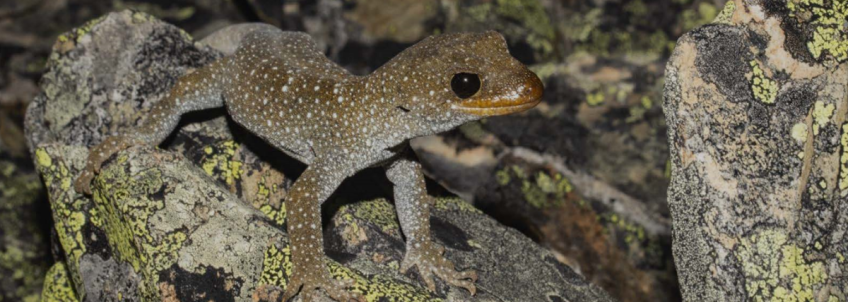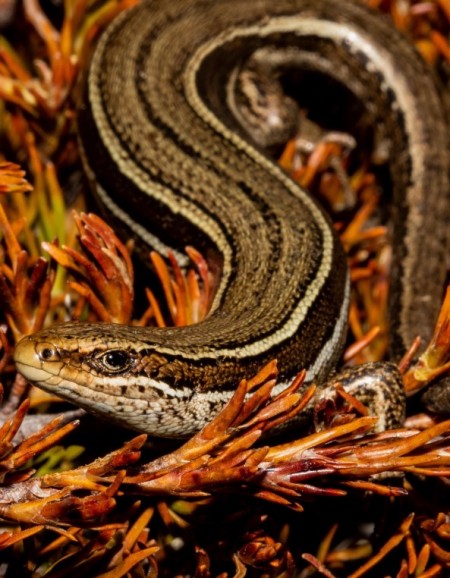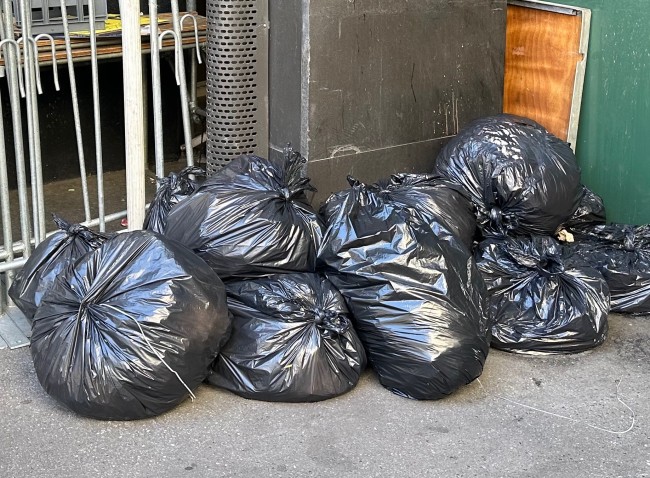
Report reveals high risk of extinction to Otago reptiles
Otago Regional Council has just released its Regional Threat Assessment for reptiles - the first in a series of threat assessments for indigenous species around Otago.

Rockhopper skink (Oligosoma “rockhopper”). Photo: Carey Knox
The regional status of most reptiles found in Otago are threatened with extinction with several species more threatened regionally than at the national level, says ORC’s Terrestrial Ecologist, Dr Scott Jarvie.
“In order to protect and restore our threatened species, we need to understand which species are living within our region,” says Dr Jarvie.
“Knowing who is in 'residence' helps us keep track of the status of our reptile populations. This allows us to work to manage threats and restore environments so our species can flourish.”
Aotearoa New Zealand is home to an incredible diversity of reptiles – more than 120 species have been identified and counting.
Dr Jarvie notes that species are still being discovered throughout the country, while geneticists are using DNA to untangle hidden diversity in widespread population.
Working with experts from the University of Otago (Dr Jo Monks), Department of Conservation | Te Papa Atawhai (Dr James Reardon), and an independent consultant (Mr Carey Knox), ORC ecologists identified 34 reptile species in Otago, of which 32 are mainly land-based: comprising 18 skinks, 13 geckos and tuatara. The two marine species are both sea turtles.
Eight of these species are only found in Otago, including the Burgan skink, grand skink, Kawarau gecko, orange-spotted gecko, Otago skink, Oteake skink, schist gecko, and short-toed gecko.
Otago is a national stronghold for 24 species of resident reptile species, meaning they contain more than 20% of the national population.
In recent years, surveys for reptiles in Otago have resulted in the discovery of new species, including the orange-spotted gecko in 1998 and rockhopper skink (photo right), alpine rock skink, and hura te ao gecko in 2018, and new populations including for orange-spotted geckos.
The number of reptile species in Otago is amongst the highest of any region in New Zealand.
 The report aligns with the Otago Regional Council’s Biodiversity Strategy, says Mr Tom Dyer, ORC Science Manager.
The report aligns with the Otago Regional Council’s Biodiversity Strategy, says Mr Tom Dyer, ORC Science Manager.
- Indigenous species and the ecosystems to support them are maintained
- Threatened indigenous species and ecosystems that support them are actively protected and maintained
- People are aware and proud of Otago’s biodiversity
“We’re fortunate in the Otago region to have such a selection of reptile species on our doorstep. This conservation status we’ve undertaken with leading experts will give us a baseline as to the presence of reptiles in the region and allow us to monitor over the coming years whether numbers are stable, increasing or in decline,” says Mr Dyer.
Threat classifications play an important role in assessing trends of indigenous species. The New Zealand Threat Classification System (NZTCS) is a tool used to assign a threat status to candidate taxa at the national scale. The Department of Conservation | Te Papa Atawhai (DOC) administers the NZTCS, with national assessments used to inform conservation action, target resources, and monitor biodiversity trends.
While DOC is tasked with managing indigenous species nationally, regional and district councils have statutory obligations to maintain indigenous biodiversity under the Resource Management Act 1991 (RMA), including to manage the habitats of threatened species. Regional threat statuses for species leverage of the NZTCS and are particularly important in the context of the RMA and in conservation planning. A key requirement of managing the habitats of threatened taxa is to understand regional population sizes.
Previous conservation actions have improved the threat status of reptile species in the Otago region. Conservation and restoration efforts to eradicate introduced mammals, and fencing to prevent mammals from reinvading, has also allowed a previously undetectable population of herbfield skinks to be discovered at Orokonui Ecosanctuary near Dunedin.
The Otago region is also lucky enough to have the Mokomoko Drylands Sanctuary near Alexandra, currently the country’s only mainland fenced sanctuary dedicated to dryland habitats and lizards.
You can find more information on the Conservation Status of Reptile Species in Otago in this report and for information on the New Zealand Threat Classification System Manual at this website.
Main image (Carey Knox): Hura te ao gecko (Mokopirirakau galaxias)





























